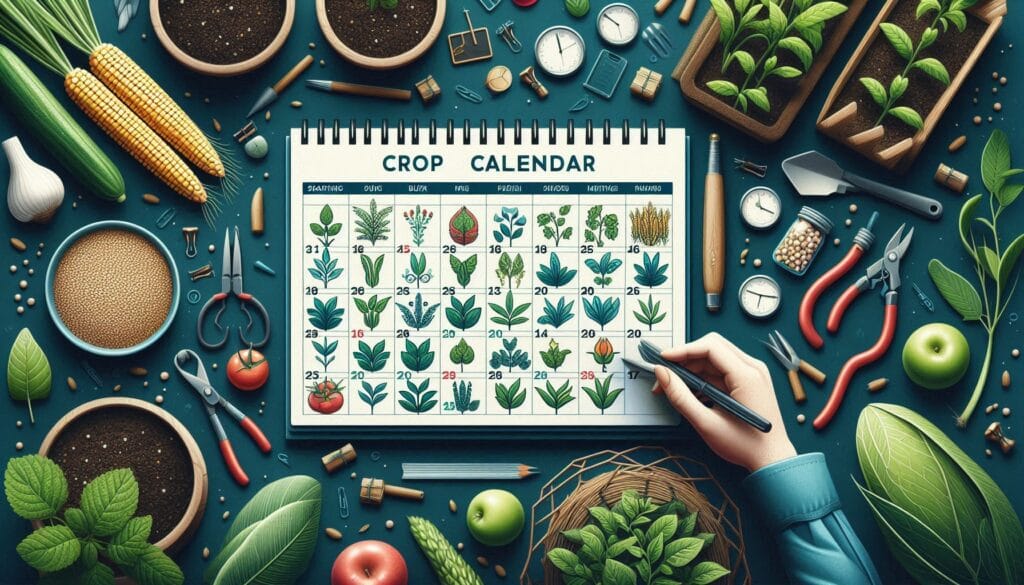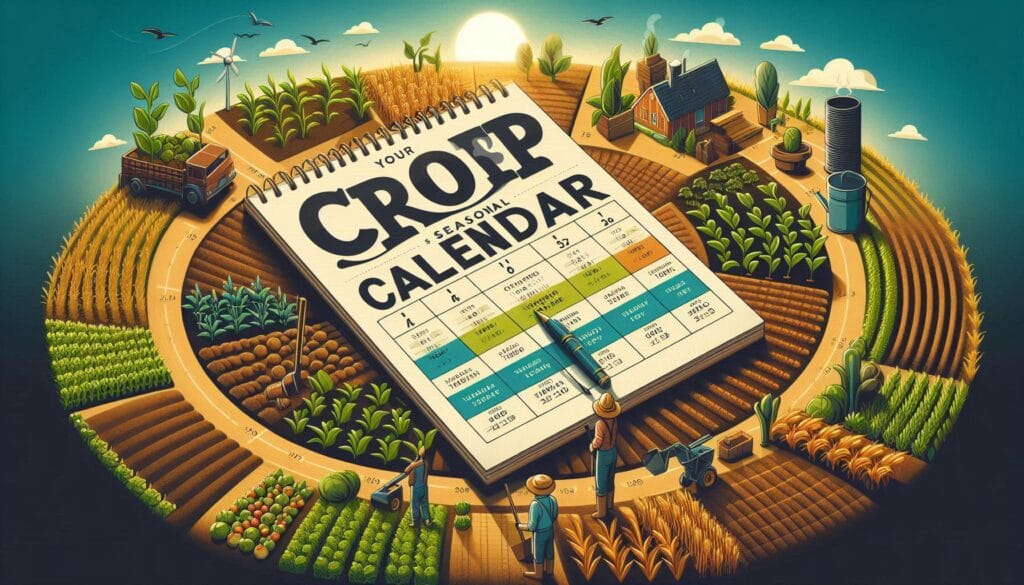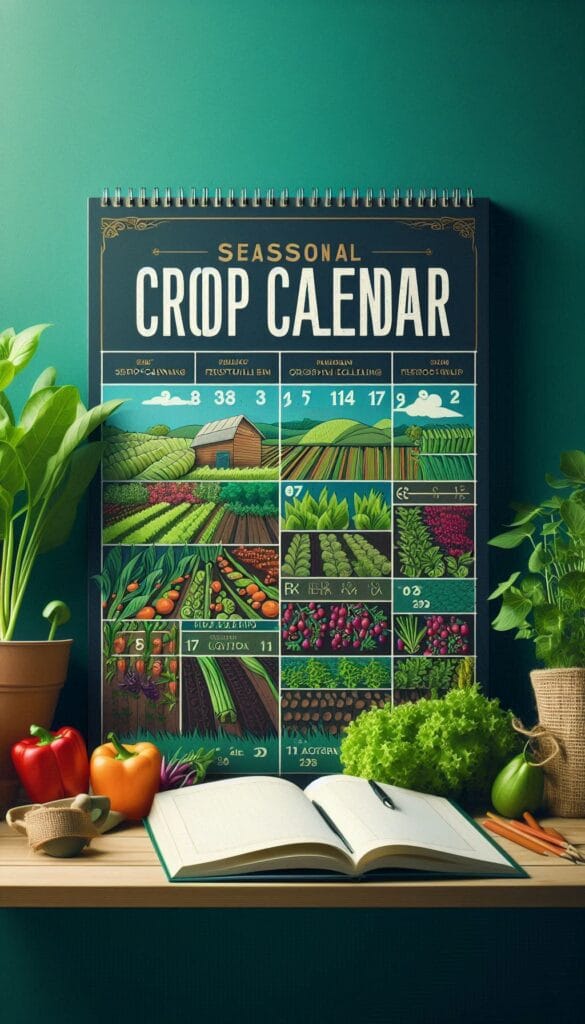Planning your crops calendar is an essential step for any farmer, especially for those practicing organic farming. By aligning your planting schedule with seasonal changes, you can maximize yields, reduce waste, and ensure your crops thrive throughout the year. This blog will guide you through effective seasonal crop planning, providing tips to make your farming efforts more efficient and rewarding.
Why Seasonal Crop Planning Matters

Seasonal crop planning is more than just deciding what to plant and when. It involves:
- Optimizing Resources: Efficient use of water, fertilizers, and labor.
- Maximizing Yield: Growing crops suited to specific weather conditions.
- Reducing Pests and Diseases: Timing crops to avoid peak pest seasons.
- Ensuring Soil Health: Rotating crops to prevent nutrient depletion.
Steps to Plan Your Crop Calendar
1. Assess Your Climate and Region
Every region has its unique growing conditions. Research the following:
- Frost Dates: Knowing the first and last frost dates is crucial for planting and harvesting.
- Rainfall Patterns: Ensure you choose crops that align with the rainy or dry season.
- Temperature Ranges: Different crops thrive in different temperature zones.
2. Choose Crops Calendar Wisely
Select crops that are:
- Suitable for Your Region: Grow what naturally thrives in your area.
- High in Demand: Focus on crops with a good market value.
- Complementary: Include companion plants to improve yield and pest control.

3. Divide the Year into Seasons
Divide your calendar into growing seasons:
- Spring: Cool-season crops like spinach, lettuce, and carrots.
- Summer: Warm-season crops such as tomatoes, peppers, and cucumbers.
- Fall: Leafy greens and root vegetables.
- Winter: Hardy crops like kale or greenhouse-grown produce.
Tips for Successful Seasonal Crop Planning
1. Start with a Crop Rotation Plan
Crop rotation helps maintain soil fertility and reduces pest buildup. Follow these steps:
- Divide Your Plot: Allocate different sections for specific crop types.
- Rotate Families: Avoid planting crops from the same family in the same spot consecutively.
- Include Cover Crops: Use legumes or clover during the off-season to enrich the soil.
2. Use Succession Planting
Succession planting ensures continuous harvests by staggering planting times:
- Plan Weekly Sowing: Plant new seeds every 2-3 weeks.
- Mix Quick and Slow Growers: For example, interplant radishes with carrots.
- Extend Growing Seasons: Use row covers or greenhouses to grow longer.
3. Consider Market Trends
If you’re farming commercially, research:
- Peak Demand Periods: Align your harvests with high-demand seasons.
- Consumer Preferences: Grow popular crops for better profitability.
4. Monitor Soil Conditions
Healthy soil is vital for successful crop planning. Ensure:
- Soil Testing: Check pH levels and nutrient content regularly.
- Amendments: Add organic compost or fertilizers as needed.
- Moisture Management: Use mulching or drip irrigation for consistent hydration.

Seasonal Crop Planning Example
Let’s break down a simple year-long plan for a small organic farm:
Spring:
- Crops: Lettuce, spinach, peas, carrots.
- Tasks: Soil preparation, compost application, direct sowing.
Summer:
- Crops: Tomatoes, zucchini, peppers, beans.
- Tasks: Mulching, pest monitoring, regular irrigation.
Fall:
- Crops: Broccoli, kale, radishes, turnips.
- Tasks: Succession planting, harvesting summer crops, planting cover crops.
Winter:
- Crops: Kale, greenhouse herbs, winter wheat.
- Tasks: Greenhouse maintenance, pruning, soil testing.
Tools for Seasonal Crop Planning
Leverage modern tools and techniques to streamline your planning:
- Garden Planning Apps: Tools like FarmLogs or Garden Planner.
- Weather Forecasting Tools: Stay updated on local weather trends.
- Crop Calendars: Use region-specific crop calendars as a reference.
- Journals: Keep a farming journal to track what works and what doesn’t.
Challenges in Seasonal Crop Planning
Despite its benefits, seasonal crop planning can come with challenges:
- Unpredictable Weather: Sudden changes in weather can disrupt plans.
- Pest Infestations: Pests may peak outside expected times.
- Labor Management: Ensure sufficient labor during planting and harvest seasons.
Address these challenges with flexibility and a proactive approach. For example, have backup crops or methods ready if your primary plan faces setbacks.

Conclusion
Seasonal crop planning is the cornerstone of successful organic farming. By understanding your local climate, choosing the right crops, and implementing sustainable practices like crop rotation and soil management, you can maximize your farm’s potential throughout the year.
5 Quick Questions and Answers About Seasonal Crop Planning
Q1: What is the main purpose of seasonal crop planning?
A: The main purpose is to align planting schedules with seasonal changes to optimize resources, maximize yield, reduce pests, and maintain soil health.
Q2: How do I determine the best crops to grow in my region?
A: Research your region’s climate, including frost dates, rainfall patterns, and temperature ranges. Choose crops that thrive naturally in these conditions.
Q3: What is crop rotation, and why is it important?
A: Crop rotation involves planting different crop families in the same area across seasons to prevent nutrient depletion, reduce pests, and improve soil fertility.
Q4: How can I deal with unpredictable weather affecting my crop plan?
A: Use weather forecasting tools, opt for resilient crop varieties, and have backup planting schedules or alternative methods like greenhouses ready.
Q5: What tools can help me with seasonal crop planning?
A: Apps like FarmLogs, region-specific crop calendars, weather forecasting tools, and farming journals are




Thank you for your sharing. I am worried that I lack creative ideas. It is your article that makes me full of hope. Thank you. But, I have a question, can you help me?
I don’t think the title of your article matches the content lol. Just kidding, mainly because I had some doubts after reading the article.
Your point of view caught my eye and was very interesting. Thanks. I have a question for you.